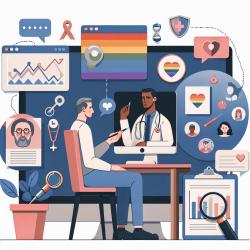Understanding Sexual Identity in Healthcare: A Data-Driven Approach
The research article “You Could Tell I Said the Wrong Things”: Constructions of Sexual Identity Among Older Gay Men in Healthcare Settings provides critical insights into how older gay men navigate their sexual identity within healthcare environments. As practitioners, understanding these dynamics is crucial for improving the quality of care and fostering inclusive environments.
Key Findings and Implications for Practitioners
The study highlights several key findings:
- Invisibility as Protection: Many older gay men choose not to disclose their sexual identity in healthcare settings to protect themselves from potential stigma and discrimination. This is particularly prevalent among those who face intersecting oppressions, such as racism and classism.
- Fear of Being "Intelligibly" Gay: There is a significant fear among older gay men about being openly gay in certain healthcare contexts, such as residential care facilities, where they might have limited agency.
- Purposeful Disclosure: Some men disclose their sexual identity to address specific healthcare needs or to resist systemic homophobia and heterosexism. This is often done selectively and strategically.
- Habitual Disclosure Among HIV-Positive Men: Gay men living with HIV frequently disclose their sexual identity, often as a form of resistance against stigma and discrimination.
Recommendations for Practitioners
Based on these findings, practitioners can enhance their skills and create more inclusive healthcare environments by:
- Promoting Safe Disclosure: Create an environment where patients feel safe to disclose their sexual identity. This includes using inclusive language and visual displays that affirm sexual diversity.
- Understanding Intersectionality: Recognize the multiple layers of identity that patients may navigate, including race, class, and health status, and how these intersect with sexual identity.
- Training on Historical Contexts: Educate healthcare providers on the historical contexts that shape older gay men's experiences, particularly the legacy of the HIV/AIDS epidemic.
- Policy Development: Advocate for policies that explicitly address stigma and discrimination against sexual minorities in healthcare settings.
Encouraging Further Research
While this study provides valuable insights, it also highlights the need for further research on sexual identity disclosure patterns among diverse groups of older gay men. Future studies could explore how these patterns vary by age, race, class, and healthcare context, and how they impact health outcomes.
For practitioners interested in delving deeper into this topic, I encourage you to explore the original research paper: “You Could Tell I Said the Wrong Things”: Constructions of Sexual Identity Among Older Gay Men in Healthcare Settings.










